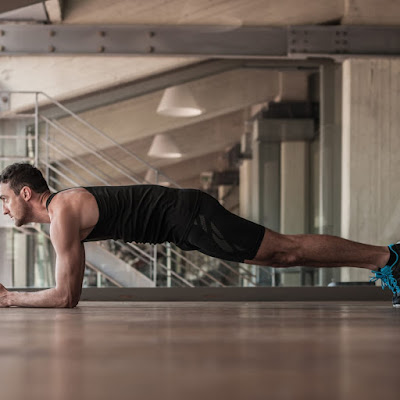Learn how nutrition affects a girl's puberty and diet during this time.
Every girl goes through a significant and life-altering stage called puberty, which marks the transition from childhood to adulthood. As their bodies mature, adolescents undergo rapid physical, emotional, and cognitive changes during this time. Good nutrition is one important factor that helps ensure a smooth transition through puberty. Nutrition is important not only for physical development but also for mental and physical health. In this article, we will explore the importance of good nutrition during puberty and its far-reaching effects on adolescents' health and development.
How Does Nutrition Impact Puberty?
Growth And Development
Puberty is a period of rapid growth and development, characterized by an increase in height, muscle mass, and the development of secondary sexual characteristics. To support this growth, a balanced diet rich in essential nutrients is paramount. Protein, vitamins, and minerals, among other nutrients, are essential for supporting these changes when one eats well. For adolescents to reach their full height and bone density potential, nutrients like calcium, vitamin D, and protein are necessary.
In order to ensure that the body grows in a manner that is both healthy and controlled, proper nutrition also helps to regulate the secretion of growth hormones. Inadequate nutrition during puberty can result in stunted growth, delayed sexual development, and an increased risk of bone-related issues in adulthood.
Hormone Regulation
During puberty, hormones like estrogen and testosterone increase, which is necessary for the development of sexual characteristics. Maintaining hormonal balance requires a healthy diet and nutritious foods. Adequate intake of essential fats, such as omega-3 fatty acids, can help regulate hormones and support mood stability. The production of hormones like insulin and thyroid hormones, which are necessary for metabolic functions and energy regulation, is also aided by a well-balanced diet.
On the other hand, excessive consumption of sugary, processed foods can lead to hormonal imbalances, contributing to issues like acne, mood swings, and irregular menstrual cycles in girls. During puberty, mental and emotional health are just as important as physical health when it comes to eating well.
Bone Health
Bone density and growth are particularly important during puberty. Calcium, magnesium, phosphorus, and vitamin D are vital for strong bones. A lack of these nutrients can lead to issues like osteoporosis later in life.
Weight Management
Puberty often brings changes in body composition. Teens who eat well are better able to keep a healthy weight and avoid issues like obesity and eating disorders.
Brain Development
During adolescence, the brain develops significantly. The nutrients the brain needs to support cognitive development and function are provided by good nutrition. Omega-3 fatty acids, which can be found in fatty fish like salmon and walnuts, have been shown to improve memory and cognitive function. A diet rich in antioxidants, found in fruits and vegetables, can protect brain cells from oxidative stress and improve overall brain health.
Menstrual Health:
A healthy diet is essential for regular menstrual cycles and reproductive health in females. Iron-rich foods are crucial to prevent iron deficiency anaemia, which can be common during menstruation.
Energy Levels
Adolescents go through growth spurts and increased physical activity. The energy you need for these changes and everyday activities comes from a well-balanced diet.
Skin Health
Hormonal changes during puberty can lead to several skin woes like acne. Skin health is aided by antioxidants, vitamins A and E, and nutrients.
Emotional Well-Being
Nutrition also affects mood and mental health. A diet rich in whole grains, fruits, and vegetables can support emotional well-being.
Establishing Healthy Habits
Adolescence is a crucial time for developing healthy eating habits that last a lifetime. Making healthy food choices and teaching teens about the value of a well-balanced diet can help them become healthier adults. On the other hand, people who eat poorly during this time may later struggle with weight control, chronic diseases, and nutritional deficiencies.
Nutrients That Are Essential During Puberty
Calcium
Calcium is an essential mineral that is necessary for the growth and maintenance of healthy bones. Girls go through a rapid growth spurt during puberty, but their bones are still developing. Consuming enough calcium helps reduce the risk of developing osteoporosis in later life. Dairy products like milk, yogurt, and cheese, as well as fortified plant-based milk alternatives, leafy green vegetables, and nuts, are some of the food sources abundant in calcium.
Iron
Haemoglobin, which carries oxygen throughout the blood, is made with iron. Because menstruation can cause girls to have more blood in their bodies during puberty, iron is especially important for preventing anemia. Food sources rich in iron include lean meats, poultry, fish, beans, lentils, fortified cereals, and dark leafy greens.
Protein
Protein is crucial for overall growth and development, including muscle and tissue repair. Protein intake is crucial because girls experience growth spurts and increased muscle development. To meet the requirements, add plenty of protein-rich foods like lean meats, poultry, fish, eggs, dairy, legumes, nuts, and seeds.
Vitamin D
Vitamin D is essential for the absorption of calcium and the development of strong bones. It also affects overall health and the immune system. Vitamin D, which can be made by the skin when exposed to sunlight and comes from natural sources like fatty fish (such as salmon and mackerel), fortified dairy products, and mushrooms, should be included in your child's diet.
Folate (Folic Acid)
Folate is an essential B vitamin for cell division and expansion. During puberty, when the body is rapidly growing, folate is vital for maintaining overall health. Folate can be found in leafy greens, legumes, fortified cereals, citrus fruits, and other foods.
.jpeg)
.jpeg)
.jpeg)
.jpeg)





.jpeg)


.jpeg)